18 Hungarian Desserts You Need To Try At Least Once
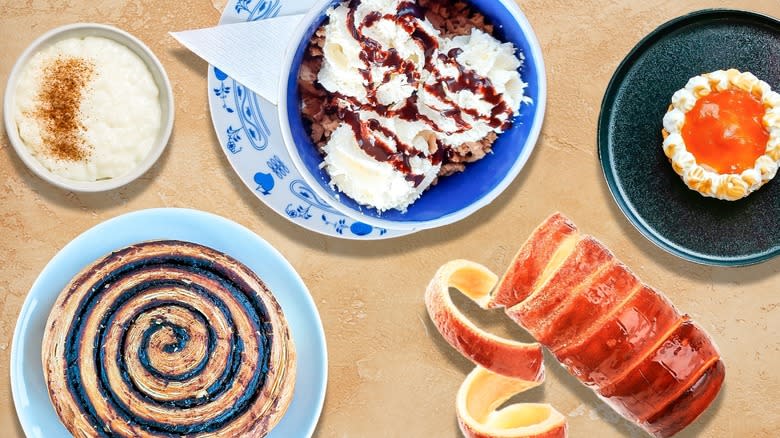
From the courts of bygone royalty to quaint bakeries in rural villages, and from grand restaurants lining the vibrant streets of Budapest to home kitchens filled with sweet aromas, Hungary's culinary offerings are as expansive as its history — a flavorful journey through time and tradition. Unfortunately, despite boasting numerous Hungarian dishes you need to try at least once, people often overlook this nation as a culinary destination, unaware of the breadth of its delights.
In fact, Hungarian interpretations of universal comfort foods — like creamy rice pudding or buttery chocolate pastries — might pleasantly surprise you. On the other hand, renowned Magyar-made desserts full of intricate layers of chocolate, fluffy cream, and unbelievably rich sponge cakes are nothing short of spectacular, seducing the senses and beckoning you to take bite after bite.
So whether you're envisioning your next visit to Hungary or aiming to get inventive in the kitchen with a host of new recipes, we've got delightful suggestions to add some sweetness to your life. The only thing left to do is decide which to try first.
Read more: 30 Types Of Cake, Explained
Almond Dacquoise Layer Cake (Eszterházy Torta)
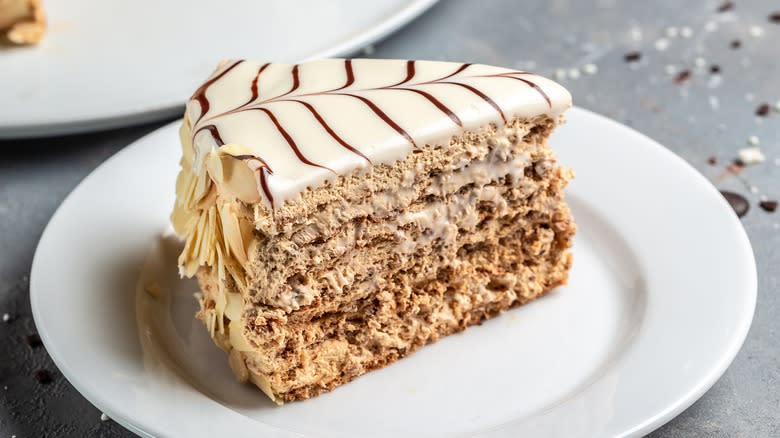
Undoubtably, one of the most regal and renowned Hungarian desserts is Eszterházy torta, an impressive dacquoise layer cake traditionally made from soft, nutty, almond meringue sandwiched between yellow buttercream enriched with golden egg yolks.
History tells us that this treat was created in the 19th century and named in honor of Prince Pál Antal Esterházy de Galántha, a member of Hungary's aristocratic Eszterházy family. It soon spread in popularity, and the cake is still prevalent in areas of the former Austro-Hungarian empire, including Vienna.
The dacquoise — a type of airy cake not too dissimilar from a macaron — is typically made with almonds (but also with walnuts or hazelnuts) and always contains egg whites and sugar. Soft, creamy, and thick buttercream is the ideal contrast — indulgent and decadent. The finishing touch is a layer of fondant feathered with chocolate, or delicate whipped cream can crown the royal cake.
Chimney Cake (Kürtőskalács)
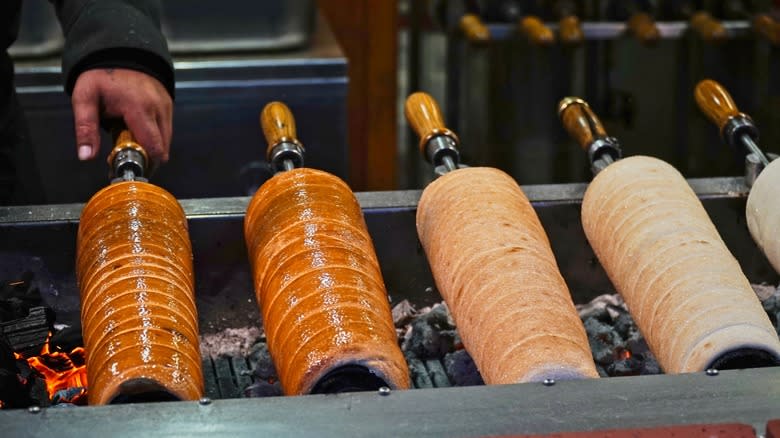
Although the exact date and place of its origin are uncertain, clues point toward an ancient delicacy being developed in Greece as early as 400 B.C., when bakers used to wrap dough around a spit to cook it. However, sweet chimney cake in its modern iteration is said to have originated in the former Hungarian territory of Transylvania.
Made from a sweet yeasted dough rolled around a circular, cone-shaped spit, chimney cakes — or as the Hungarians call them, kürtőskalács (pronounced kurt-ohsh-ka-latz) — are fluffy in texture and incredibly adaptable. Once considered a fairground or festival food, now you can find this handheld spiral delicacy sold fresh daily at stands across the capital city of Budapest. While the plain, lightly glazed version remains the most well-known, vendors often coat chimney cakes with sugar and flavorings like cinnamon or shredded coconut, or even dip them in chocolate and stuff them with ice cream.
Chestnut Puree (Gesztenyepüré)
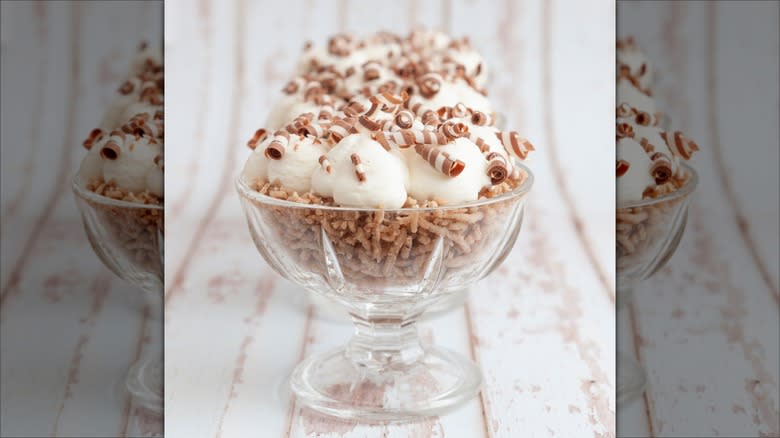
We can't think of any dish that celebrates seasonal produce more so than chestnut puree, a delicacy reserved for the autumn and winter. It's traditionally enjoyed for Christmas Eve, although some can't wait and start making it as soon as chestnuts appear on the trees. The dessert is popular in Hungary, France, and Austria, and it goes by different names in each country, and each has a distinct taste. The Hungarian version, called gesztenyepüré, is an acquired taste, but it has a fair share of devotees, too.
While you can buy pre-made slabs of chestnut puree across supermarkets in Hungary, as with most traditional recipes, it tastes best homemade and fresh. So, to make this unique treat, start by roasting whole chestnuts and cooking them in a blend of milk, water, and vanilla beans until the nuts reach a tender consistency. Once softened, mix the chestnuts with a simple sugar syrup, a hint of rum, and a pinch of salt. After chilling, push the puree through a potato ricer (or use an icing bag) and top it with generous amounts of whipped cream and shaved chocolate.
Jam, Nut, And Poppyseed Layered Pastries (Flódni)
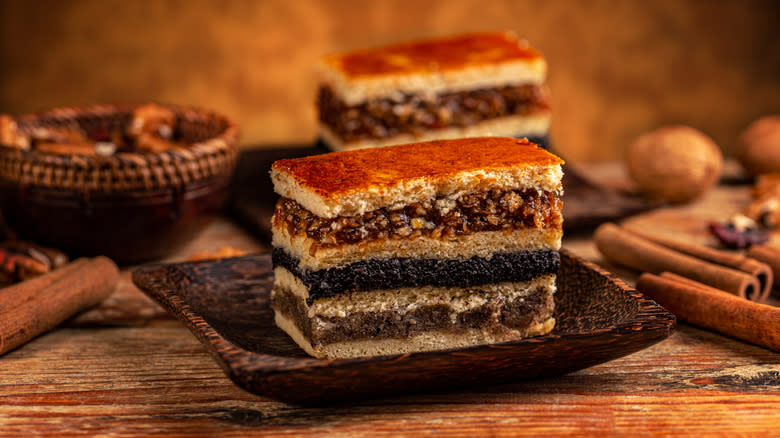
Hungary's vibrant history gave rise to a significant Jewish community that dates back centuries. By the early 1900s, Budapest boasted a thriving Jewish population, and despite the tragic events of World War II leading to the flight or loss of many Jewish residents, the community's traditions endure in Hungary, particularly in the cultural fabric of the capital city.
One of these traditions is flódni, a Hungarian-Jewish treat made with layers of filling. Cafes across Budapest bustle with orders for this multiflavored treat during Jewish celebrations such as Hanukkah and Purim. Rather fittingly, the separate layers of the dessert — buttery pastry (or crispy phyllo layers, depending on the baker) filled with sweetened ground walnuts, poppyseed paste, honey-soaked apples, and homemade plum jam — are said to serve as a symbol of the diverse people of Hungary living together in a state of peace.
Rice Pudding (Tejberizs)

What could be more comforting than a bowl of silky, creamy rice pudding? Whether it's kheer (a type of North Indian mithai dessert), a classic British baked rice pudding, or Hungary's tejberizs, this dish holds universal appeal.
Interestingly, while we now think of rice pudding as an everyday comfort food, rice was once viewed as an exotic import in Europe, and a dessert like this was reserved for only the most special occasions — imagine wedding feasts and royal dinner tables. Luckily, thanks to globalization and trade, we can now enjoy rice pudding as much as our hearts desire. The recipe is straightforward: heat milk with sugar, vanilla, and a pinch of salt. Cook the rice in the mixture, stirring regularly, until it's thickened and creamy. In Hungary, people typically complete the dessert with an ample sprinkling of cinnamon or bitter cocoa powder, but it's equally delightful with a dollop of fruit jam.
Gerbeaud Cake (Zserbó)
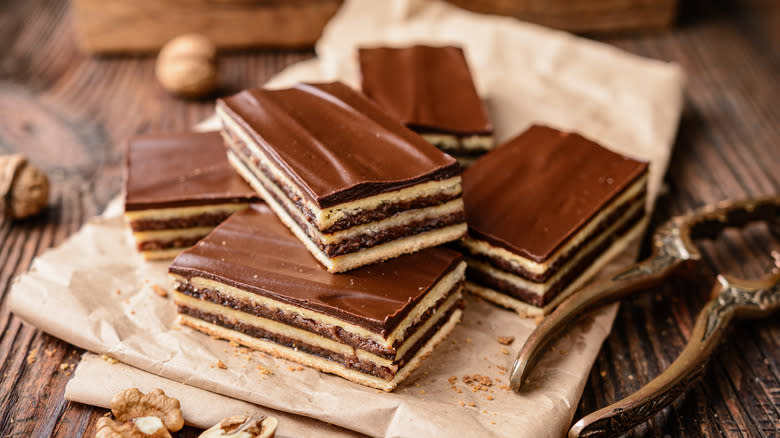
Hungarians are known for their love of layered desserts, with many of their most notable confections showcasing this delicious baking technique. At the forefront is Gerbeaud cake, also known as zserbó. The delight is linked with Budapest's beautiful and iconic Gerbeaud cafe, with roots dating back to 1858. Swiss-born Émile Gerbeaud was already one of Europe's most illustrious confectioners when he moved to Hungary in the late 1800s to oversee the eatery that now bears his name. While it may not have been Gerbeaud himself who created this cake, the treat soon became so beloved that it conquered the streets of Budapest. Before long, the entire nation of Hungary was yearning for a slice of this celebrated cake.
The Gerbeaud cafe is still open for business, but if you fancy making this iconic dessert at home, you'll need to layer rich and buttery pastry with sweet apricot preserves (or homemade apricot jam enriched with rum) and chopped walnuts. Cover the whole thing in melted dark chocolate for a hint of bitterness, and enjoy.
Shredded Pancakes (Császármorzsa)
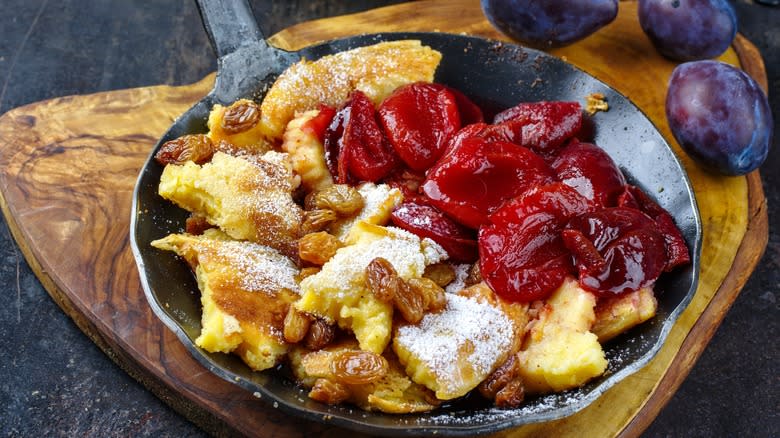
Shredded pancakes — called császármorzsa by Hungarians — was a favorite dish of Emperor Franz Joseph, ruler of the Austro-Hungarian monarchy from the mid-1800s until his death in 1916. Stories vary as to how the dish originated. One legend involves a humorous tale of the emperor stopping by a rural farmer's house; in an effort to impress this royal visitor, the farmer cooked a pancake with all the best ingredients he had — but in a fit of nerves, he was unable to toss the pancake and ended up shredding it instead. To hide the mistake, he slathered the pancake pieces with jam. Luckily, Franz Joseph was amazed by the delicious taste, and a new dessert was born.
Over a century since the Austro-Hungarian empire's collapse, the dessert is still popular in both Austria and Hungary today. Hungarians typically serve it with a sprinkling of fine sugar and sweet apricot jam. In Austria, it's known as kaiserschmarrn, and it includes the addition of rum-soaked raisins. This is also one of the favorite desserts of Wolfgang Puck, who hails from Austria.
Cocoa Swirls (Kakaós Csiga)
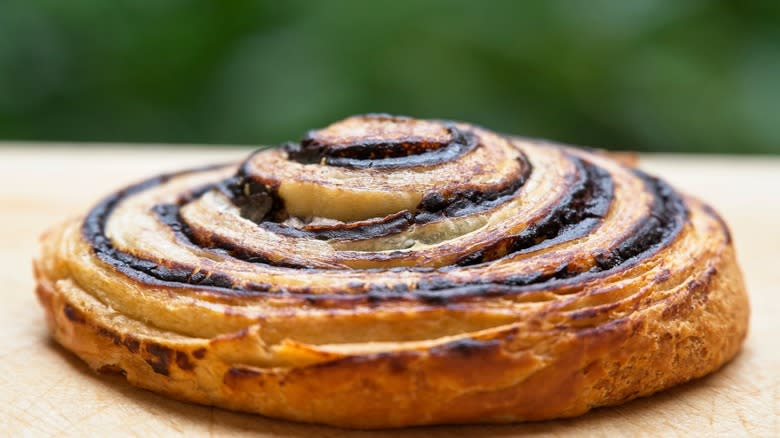
If you like chocolate desserts, we've got the perfect suggestion: Hungary's cocoa swirls, a rich, buttery, chocolatey treat that's impossible to resist. Technically, its Hungarian name — kakaós csiga — translates to "chocolate snail" ... but you wouldn't have been nearly as tempted if we started with that, would you?
These tantalizing pastries showcase a unique flaky pastry called blundell, a variety of laminated yeast dough similar to that of croissants — only far richer, thanks to the addition of eggs. As such, making a kakaós csiga requires a definite mastery, so instead of preparing them at home, Hungarians usually pick one up from their favored pastry shop for a sweet breakfast.
Of course, more than anything else, the delectable chocolate filling is what makes these twirls so tempting. The pastry's mixture of dark, unsweetened cocoa powder and sugar, when baked, creates the most gorgeous aroma.
Cottage Cheese Cake (Rákóczi Túrós)
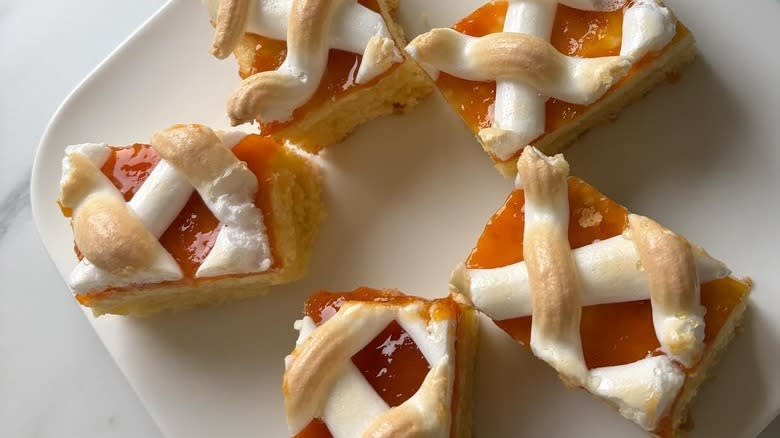
A buttery shortbread-style pastry base, topped with a tangy, sweet, and citrusy blend of firm cottage cheese, egg yolks, sour cream, lemon zest, vanilla, sugar, and raisins — already sounds inviting to us! But, if that wasn't enough to make you hungry, bakers finish this dessert with a lattice of soft, fluffy meringue and spoonfuls of thick apricot jam. Traditionally, you'll always find the cake cut in attractive square slices, but you can refashion it as a tart or galette to suit your liking.
This Hungarian cake goes by the name Rákóczi túrós, blending several staples of the country's beloved desserts: apricot jam, cottage cheese, and skillfully crafted pastry. The recipe is believed to date back to a culinary journal from the 1930s, before debuting at the World Exhibition in Brussels in 1958, and finally achieving fame after appearing in a cookbook of Hungarian cuisine by famed confectioner János Rákóczi in the 1960s.
Sweet Baked Pasta (Vargabéles)
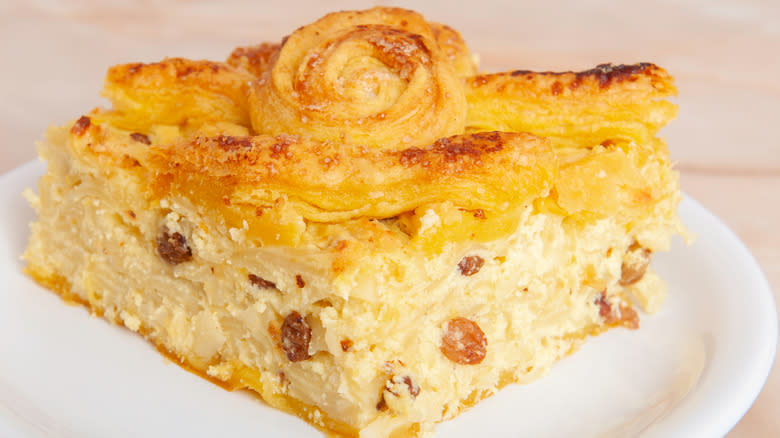
In Europe — particularly in Central and Eastern Europe, including Hungary — people consider pasta a far more versatile option than just for savory foods; it appears on dessert plates almost as often as lunch courses.
Perhaps the most ubiquitous of all Hungarian sweet pasta dishes is vargabéles, a variety of "cake" combining delicate strands of buttery vermicelli pasta with cottage cheese, sour cream, whipped eggs, vanilla sugar, plump raisins, and bright lemon zest. Then, chefs encase the whole dish in a thin sheet of light strudel pastry before baking it in an oven, cooling it, and cutting it into individual portions. It's usually eaten after hearty main courses.
Vargabéles is technically a dessert from Transylvania, a region that once belonged to Hungary and still features sizable Hungarian communities. During World War II, it's said that Hungary's demand for vargabéles remained so resolute that the historic Budapest restaurant Gundel flew the dessert in by plane.
Christmas Poppy Seed Roll (Beigli)
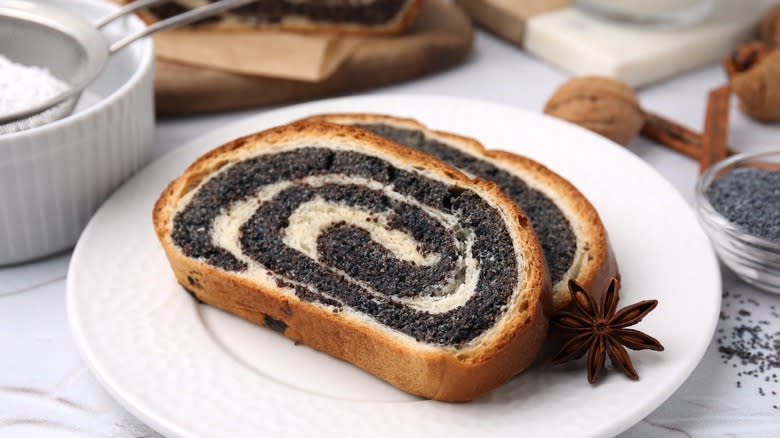
For most European countries, Christmas is the biggest holiday of the year, culminating with the whole family sitting down to tuck into a massive festive spread. It's always a good idea to save room for after you've finished the Christmas dinner, because dessert is often the best part. While it's not as widely known as some of the best Christmas desserts, in the case of Hungary, beigli indisputably takes center stage during the most wonderful time of the year. Somewhat similar to a Swiss roll, beigli is a filled confection that features a yeasted dough often flavored with citrus zest, rolled up and baked to embrace a sweet poppyseed paste filling.
There's meaning behind the poppyseeds. In Hungary, poppyseeds can symbolize good luck, making beigli a particularly auspicious treat for the Christmas and New Year festive season. Beigli is often offered with walnut paste instead of poppyseed, and occasionally you'll find beigli with chestnuts or chocolate, but the original poppyseed beigli always sells out first at Budapest's bakeries.
Fruit Pie (Pite)
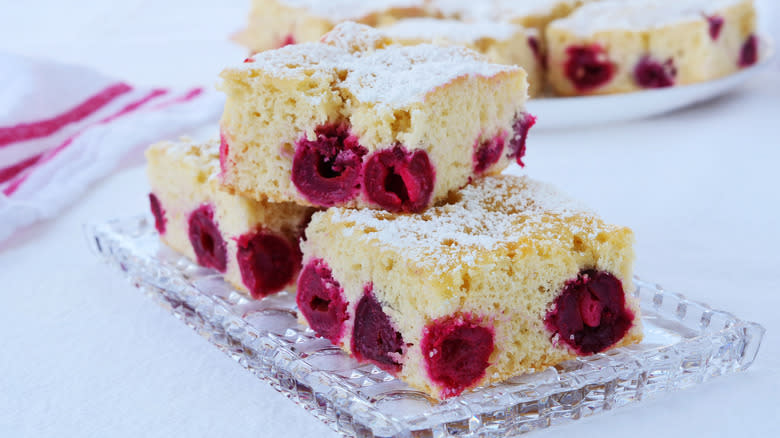
The Hungarian word "pite" is commonly translated to "pie" — but you may be thinking, "that looks like a cake, not a pie." Indeed, while some Hungarian pies are closer to an American-style pie (with sweetened cooked fruits encased in a layer of pastry, often with latticework exposing the filling), others are more like cakes.
This Hungarian pite variation resembles a sponge cake, but elevates the experience with the indulgence of butter and sour cream, resulting in an exceptionally fluffy, moist, and flavorful dough. The slight tartness of the fruit used to top the cake seeps into the batter, complementing the sweetness and undertones of tangy sour cream.
Home cooks make pite using whichever fruits are in season, but sour cherry is always a popular choice, as is apricot and apple. Pastry-based pite (which looks more like a classic pie or tart) usually boasts a fruity filling. Alternatively, it can include a vanilla-laced poppyseed paste.
Trifle (Somlói Galuska)
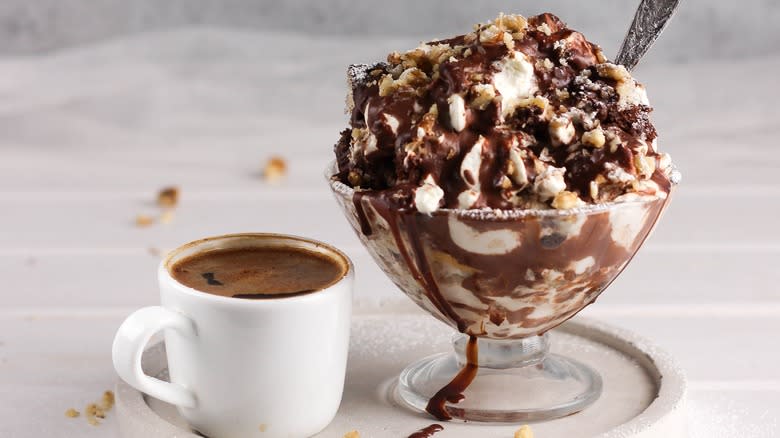
Something about a glass trifle bowl piled high with a whipped cream topping promises unrivaled deliciousness, and we can't help when our eyes light up or our stomachs growl in approval. But Hungary's version of a trifle is an entirely new beast — even more decadent than you could imagine.
Like most special-occasion desserts, Hungarian trifle (Somlói galuska) requires substantial preparation time. It's all worth it, though. Not one, but three different types of sponge cake go into the treat: plain, walnut, and chocolate. Confectioners slather each type of cake in a rum and sugar concoction infused with orange peel and lemon zest; this imbues them with a gorgeous syrupy taste and adds a delightfully moist texture. Then, they combine the cakes with apricot jam, crushed walnuts, and a creamy, silky vanilla cream. The whole thing is topped with a sprinkling of bitter cocoa powder, a rum-chocolate sauce, and lightly whipped cream.
Stuffed Crepes (Palacsinta)

Forget limiting crepes to breakfast — these irresistible goodies are perfect all day, especially after a robust Hungarian meal. The soft, tender batter, boasting crispy caramelized edges, is decked with powdered sugar and filled with your choice of delights — fruit jams, chocolate, sweet cottage cheese, cinnamon, and much more — before being rolled up for easy eating.
But how are Hungary's palacsinta treats different from other European pancakes? While we refer to these as crepes, that's not entirely accurate. Palacsinta is even thinner, with no rising agent in the batter, and it shares a similar preparation to an easy crepe recipe — but Hungary's version is enhanced by the last-minute addition of sparkling water.
With minimal or no sugar in the recipe, the focus remains on the delightful fillings, which are mostly sweet but can also include savory ingredients. Just about every market hall across Hungary features a palacsinta stand for shoppers to pick up a sweet snack.
Dobos Torte (Dobostorta)
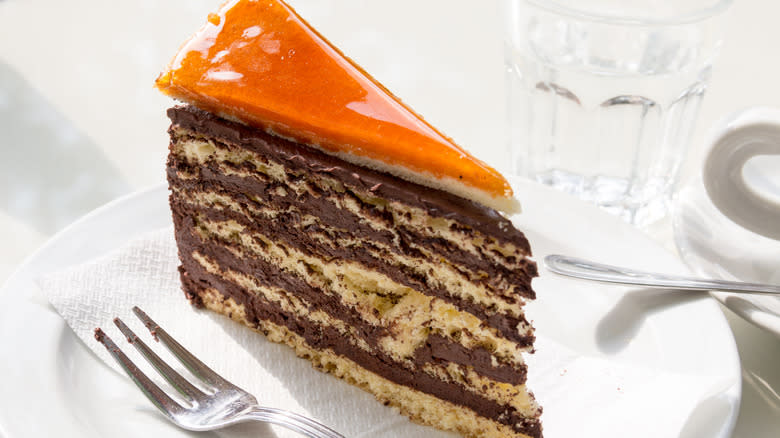
Dobos torte may be the most famous of all the Hungarian layered cakes. If you pop into a confectionery anywhere across Hungary, from Budapest to a small town, a slice of "Dobostorta" will sit in pride of place behind a glass counter, tempting you to buy it. This treat even served as the inspiration for doberge cake, a New Orleans icon. It's no wonder that Dobos torte has achieved legendary status — six layers of fluffy sponge cake spaced with chocolate buttercream and topped with gleaming hardened caramel are enough to have anyone drooling.
"Dobos" means "drummer" in Hungarian, and it's a common mistake to assume that this cake was named for its round appearance and hard caramel topping that slightly resembles a percussion instrument. However, this sweet delight was invented by Hungarian chef József Dobos in the 1880s, who presented the cake to Austro-Hungarian Emperor Franz Joseph before going on to achieve culinary renown throughout Central Europe.
Pull-Apart Cake (Aranygaluska)
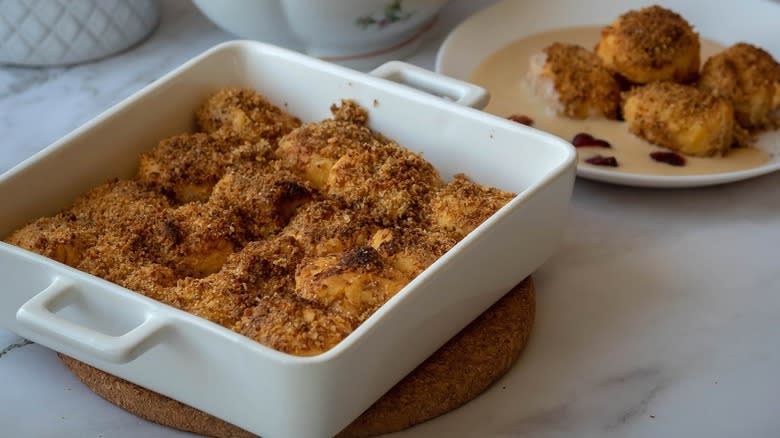
Monkey bread, the American breakfast treat, is a descendant of the Jewish-Hungarian aranygaluska, which translates to "golden dumpling" and is served as a pull-apart cake. Bakeries of Budapest's Jewish Quarter are full of the rich, buttery, nutty scent of this yeasted cake to celebrate Purim, a Jewish holiday in early springtime. The dessert was popularized in the U.S. after Nancy Reagan served a version of it at the White House.
Because aranygaluska is a yeasted confection, you let the dough rise before baking it, meaning it's a labor of love — but worth the time it takes. Your mouth starts watering when you dip each dough ball into a devilish amount of melted butter, then coat them in a mixture of sweetened chopped walnuts. Smoosh it all together in a baking pan, and into the oven it goes. After emerging golden brown, the aranygaluska is ready to be devoured, optionally with a flood of velvety vanilla custard. Alternatively, as in Jewish custom, serve it with a white wine applesauce.
Cottage Cheese Dumplings (Túrógombóc)
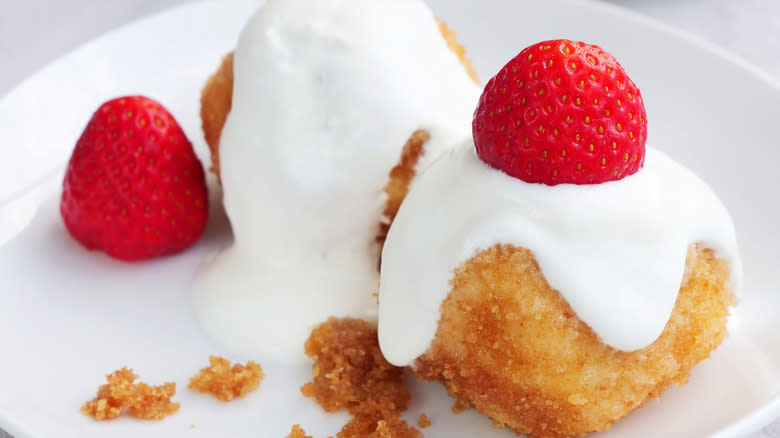
Contrary to most American treats, Hungarian desserts typically aren't laden with syrup and sugar, instead favoring a balance of flavors between nutty, fruity, tangy, and honeyed. This unusual confection — one we definitely recommend you try, either by making it at home or seeking it out from a Hungarian restaurant — is a perfect example: túrógombóc.
These may look like doughnuts, but these dumplings aren't fried. Instead, the mixture has a foundation of Hungarian cottage cheese called túró, which is a fresher, thicker, and drier version of what we find in the dairy aisle of U.S. supermarkets. Added to the túró are beaten eggs, semolina, and a little sugar. Cooks form this mixture into balls, then rest them in the fridge, allowing the semolina to soak up the flavors. The túrógombóc are then boiled in lightly salted water, rolled in fried breadcrumbs, and topped with sour cream. It's a classic recipe dating back to the late 1800s, and it remains one of Hungary's unmissable culinary treats.
Bread Pudding (Máglyarakás)
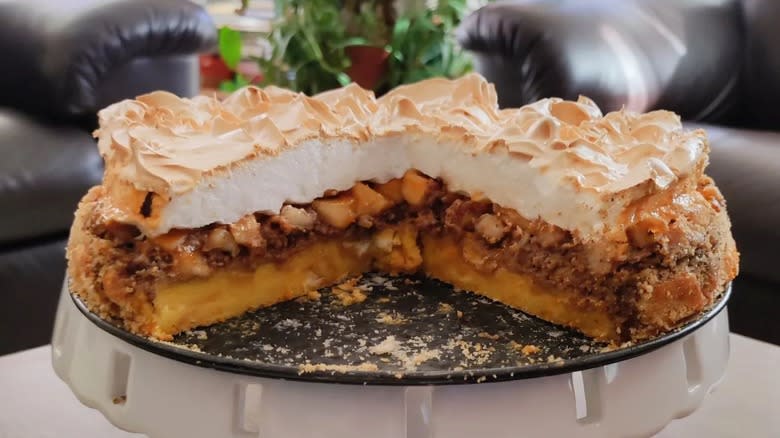
Although most regions across Europe have versions of bread pudding, this Hungarian one, called máglyarakás, remains entirely unique. Even within Hungary, there are varying ways to create desserts from leftover breadstuffs, but this one is perhaps the most in-demand bread pudding around the country.
The dish is rooted in tradition, and every household has a different recipe. What remains constant, though, are the main ingredients; stale bread soaked in a mixture of egg and milk, topped with cinnamon-spiced apples and baked. Much like Rákóczi túrós, the bread pudding is finished with a thick layer of meringue. The apples chosen for this recipe should be a bit past their prime, similarly to the stale bread used for the dessert. The resulting dish is hearty and warming, even more so with familiar additions of rum-soaked raisins or apricots, and it can be further elevated with subtle spicing.
Read the original article on Tasting Table.

